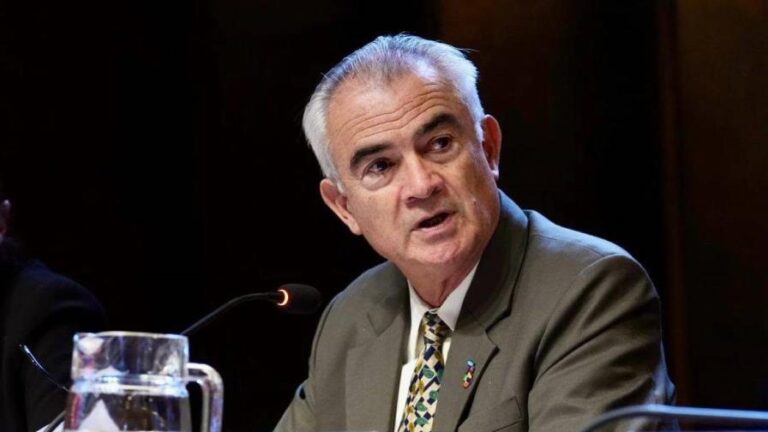Desde la aprobación del Aeropuerto Internacional de Bávaro (AIB) en la recta final de la pasada administración, el proyecto ha levantado más preguntas que respuestas, más dudas que certidumbres. A seguidas algunas pistas de análisis de variables económicas y sistémicas que claramente apuntan a que el proyecto no despegará.
La atención se ha centrado principalmente en los aspectos jurídicos, el proceso de aprobación y el cumplimiento con las formalidades necesariamente exigentes en este tipo de infraestructura. Las nuevas autoridades han tomado decisiones que parecen confirmar insuficiencias o hasta irregularidades (denunciadas por varios sectores), y han abierto el espacio para una revisión a fondo del proyecto.
Muy poca discusión sobre los aspectos económicos, si bien en primera instancia parecería ser exclusiva y únicamente un proyecto de inversión privada. Empero, un aeropuerto conlleva claras implicaciones para el sector público, ya que le obliga a inversiones y gastos en momentos de grandes debilidades financieras por el impacto del COVID-19. Tal como se ha revelado, al AIB se le ha concedido exenciones fiscales que superan los RD$4,000 millones. Sin estas subvenciones, sería inviable económicamente, según un análisis costo-beneficio del Ministerio de Hacienda.
Los proponentes del AIB tildan de “monopolio” al actual Aeropuerto Internacional de Punta Cana (AIPC), argumento, como veremos, insostenible. Abunda la literatura sobre la materia, con prevalencia del pensamiento liberal y desregulador que asocia “monopolio” con aspectos negativos como trabas a la libre competencia, encarecimiento de los bienes y servicios e ineficiencia económica. Sin embargo, el tema es mucho más complejo. Por su propia naturaleza, un aeropuerto responde más a las reglas de infraestructura básica para proveer servicios públicos (muy complejas) que a las leyes de oferta y demanda del mercado privado (mucho más sencillas).
Podría argumentarse, pues, que en este tipo de infraestructuras conviene más al consumidor una red única y/o un operador único, en razón de costos menores gracias a economías de escala que, con una regulación adecuada, proporcionarían precios más bajos y no necesariamente utilidades más altas. Por ende, el valor agregado sería nulo a menos que otro aeropuerto a menos de diez minutos por carretera del AIPC generase mercados nuevos y pasajeros que de otra manera no vendrían al país, algo difícil. Más bien se incrementarían los costos y disminuiría la calidad de los servicios actuales con la consecuente merma en el valor de las inversiones existentes.
Las estadísticas oficiales del Banco Central de la República Dominicana (BCRD), del Instituto Dominicano de Aviación Civil (IDAC) y de la Junta de Aviación Civil (JAC) demuestran la inexistencia de monopolio aeroportuario en el Este. Al contrario, confirman la libre concurrencia entre los aeropuertos de Las Américas, La Romana y Punta Cana, que por demás corresponden a grupos económicos competidores entre sí: Vinci Airport (concesionario de los aeropuertos estatales), el grupo Central Romana/Casa de Campo, y el Grupo Punta Cana.
Sin desconocer la relevancia de esos aeropuertos que contabilizan más del 81% de de las llegadas, su participación en el mercado de viajeros es a la baja en los últimos cinco años. De hecho, los demás aeropuertos (Santiago, Puerto Plata y Samaná) han registrado un mayor crecimiento y mejorado su cuota de mercado. Mientras las llegadas a la zona Este aumentaron un 24.3% al pasar de 4,584,621 pasajeros (2014) a 5,699,028 (2019), los demás aeropuertos crecieron en el mismo período de 1,064,122 a 1,427,829 , o sea un 34.2%. En igual lapso, la participación de los tres aeropuertos del Este bajó de un 81.16% a un 79.96%; y, producto del COVID-19, las cifras de 2020 hasta noviembre (11 meses acumulados) muestran un descenso adicional hasta un 73.84%.
En la región Este, el AIPC ha registrado el menor crecimiento entre 2014 y 2019 (+20.6%), al pasar de 2,922,169 a 3,524,425 llegadas, mientras Las Américas crecía un 27.7% y La Romana experimentaba un salto del 72.1%. En otras palabras, la participación relativa de mercado del AIPC ha bajado de un 63.7% (2014) a 61.8% (2019), lo que evidencia doblemente la ausencia de monopolio: una cuota entre 60% y 65% dista mucho de monopólica, y una participación declinante confirma que sí hay competencia. Otro ejemplo: el muy importante y lucrativo mercado ruso tradicionalmente pertenecía al AIPC. De acuerdo a las estadísticas del BCRD, 193,663 turistas rusos arribaron por esa terminal aérea en 2018, un 86.4% de los 224,064 del total. El año pasado, el Aeropuerto de La Romana recibió 111,945, un 51.6% de los 217,082 rusos que nos visitaron. En cambio, a Punta Cana solamente llegaron 69,127, un 31.8%, y muy por debajo del 86.4% del año anterior.
En conclusión, y compartiendo el concepto de los autores Güller y Güler: “el objetivo de un sistema aeroportuario no es, en realidad, establecer una entidad funcional, un “aeropuerto hub”, con el que varios aeropuertos compartan las tareas (…) Más bien, lo que un sistema aeroportuario debe hacer es proporcionar el mismo grado de accesibilidad al tráfico aéreo a toda la región, así como permitir la distribución adecuada de los posibles beneficios.”
Se entiende que cualquier decisión debe partir de una visión de un sistema aeroportuario a nivel nacional, compuesto, en el caso dominicano, por tres subsistemas: Norte (Aeropuerto Internacional Gregorio Luperón (POP) en Puerto Plata, el Aeropuerto Internacional Presidente Juan Bosch (AZS) en Samaná, y el Aeropuerto Internacional del Cibao (STI) en Santiago); Sur: (María Montez (BRX), con un fuerte potencial de materializarse inversiones en el eje Baní-Pedernales), Este: (Aeropuerto Internacional de Punta Cana (PUJ), Aeropuerto Internacional de la Romana (LRM), Aeropuerto Internacional Las Américas (SDQ) y Aeropuerto Internacional La Isabela (JBQ).
Asumiendo los niveles de complementariedad y competencia entre los tres subsistemas y en su interior, carecería de sentido otro aeropuerto más en el Este como igualmente en Moca o San Francisco de Macorís.
En otra entrega analizaremos el balance costo-beneficios para el Estado y el país, el cual de antemano arroja un resultado contrario a la apertura de otro aeropuerto. De contar el Estado con recursos para infraestructura aeroportuaria, la decisión correcta sería priorizar el subsistema Sur, a tono con los nuevos.
Fuente: Diario Libre[:en]Since the approval of the Bávaro International Airport (AIB) in the final stretch of the last administration, the project has raised more questions than answers, more doubts than certainties. Following are some hints of analysis of economic and systemic variables that clearly indicate that the project will not take off.
Attention has focused mainly on legal aspects, the approval process, and compliance with the necessarily demanding formalities in this type of infrastructure. The new authorities have made decisions that seem to confirm inadequacies or even irregularities (reported by various sectors), and have opened the space for a thorough review of the project.
A very little discussion about the economic aspects, although in the first instance it would seem to be exclusively and only a private investment project. However, an airport has clear implications for the public sector, since it forces it to invest and spend at times of great financial weakness due to the impact of COVID-19. As has been revealed, the AIB has been granted tax exemptions that exceed RD $ 4 billion. Without these subsidies, it would be economically unviable, according to a cost-benefit analysis by the Ministry of Finance.
Proponents of the AIB call the current Punta Cana International Airport (AIPC) a «monopoly», an argument, as we shall see, unsustainable. Literature abounds on the subject, with the prevalence of liberal and deregulatory thinking that associates “monopoly” with negative aspects such as obstacles to free competition, higher prices for goods and services, and economic inefficiency. However, the issue is much more complex. By its very nature, an airport responds more to the basic infrastructure rules to provide public services (very complex) than to the supply and demand laws of the private market (much simpler).
It could be argued, therefore, that in this type of infrastructure a single network and/or a single operator is more convenient for the consumer, due to lower costs thanks to economies of scale that, with adequate regulation, would provide lower prices and not necessarily profits. higher. Therefore, the added value would be zero unless another airport less than ten minutes by road from the AIPC generated new markets and passengers that would not otherwise come to the country, something difficult. Rather, costs would increase and the quality of current services would decrease with the consequent decrease in the value of existing investments.
Official statistics from the Central Bank of the Dominican Republic (BCRD), the Dominican Institute of Civil Aviation (IDAC), and the Civil Aviation Board (JAC) show the absence of an airport monopoly in the East. On the contrary, they confirm the free competition between the airports of Las Américas, La Romana, and Punta Cana, which also correspond to competitive economic groups: Vinci Airport (concessionaire of state airports), the Central Romana / Casa de Campo group, and the Punta Cana Group.
Without ignoring the relevance of those airports that account for more than 81% of arrivals, their participation in the passenger market is down in the last five years. In fact, the other airports (Santiago, Puerto Plata, and Samaná) have registered higher growth and improved their market share. While arrivals to the East zone increased by 24.3%, going from 4,584,621 passengers (2014) to 5,699,028 (2019), the other airports grew in the same period from 1,064,122 to 1,427,829, or 34.2%. In the same period, the participation of the three Eastern airports fell from 81.16% to 79.96%; and, as a result of COVID-19, the figures for 2020 until November (11 months accumulated) show an additional decrease to 73.84%.
In the Eastern region, the AIPC has registered the lowest growth between 2014 and 2019 (+ 20.6%), going from 2,922,169 to 3,524,425 arrivals, while Las Américas grew by 27.7% and La Romana experienced a jump of 72.1%. In other words, the relative market share of the AIPC has dropped from 63.7% (2014) to 61.8% (2019), which is doubly evidence of the absence of monopoly: a share between 60% and 65% is far from monopolistic, and declining participation confirms that there is competition. Another example: the very important and lucrative Russian market traditionally belonged to the AIPC. According to BCRD statistics, 193,663 Russian tourists arrived at that air terminal in 2018, 86.4% of the 224,064 of the total. Last year, La Romana Airport received 111,945, 51.6% of the 217,082 Russians who visited us. On the other hand, only 69,127 arrived in Punta Cana, 31.8%, and well below the 86.4% of the previous year.
In conclusion, and sharing the concept of the authors Güller and Güler: “the objective of an airport system is not, in reality, to establish a functional entity, a“ hub airport ”, with which several airports share the tasks (…) Moreover, what an airport system must do is provide the same degree of accessibility to air traffic to the entire region, as well as allow adequate distribution of the possible benefits. »
It is understood that any decision must be based on a vision of an airport system at the national level, composed, in the Dominican case, of three subsystems: North (Gregorio Luperón International Airport (POP) in Puerto Plata, Presidente Juan Bosch International Airport (AZS) ) in Samaná, and the Cibao International Airport (STI) in Santiago); South: (María Montez (BRX), with a strong potential to materialize investments in the Baní-Pedernales axis), East: (Punta Cana International Airport (PUJ), La Romana International Airport (LRM), Las Américas International Airport ( SDQ) and La Isabela International Airport (JBQ).
Assuming the levels of complementarity and competition between the three subsystems and within them, another airport in the East would be meaningless, as in Moca or San Francisco de Macorís.
In another installment, we will analyze the cost-benefit balance for the State and the country, which beforehand shows a result contrary to the opening of another airport. If the State has resources for airport infrastructure, the correct decision would be to prioritize the South subsystem, in line with the new ones.
Source: Diario Libre[:]




